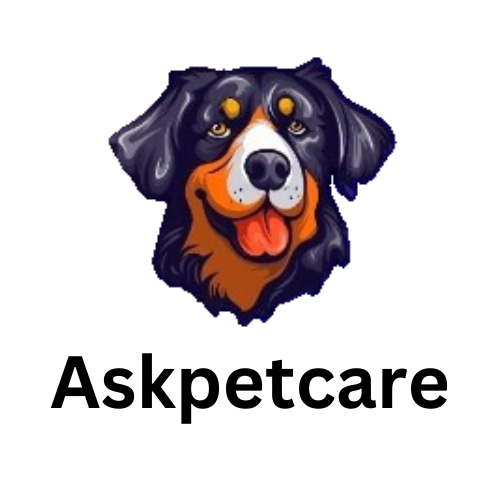In this blog, we embark on a journey to uncover the mystique surrounding Alsatian dogs, exploring their fascinating history, unique characteristics, and enduring appeal. Readers can expect to delve into the origins of the breed, gaining insight into its development and evolution over the years.
We will unravel the significance of the term “Alsatian” and its connection to the breed’s heritage, shedding light on its historical context and modern usage. From debunking common myths to offering practical advice for prospective owners, this blog aims to provide a comprehensive understanding of Alsatian dogs.
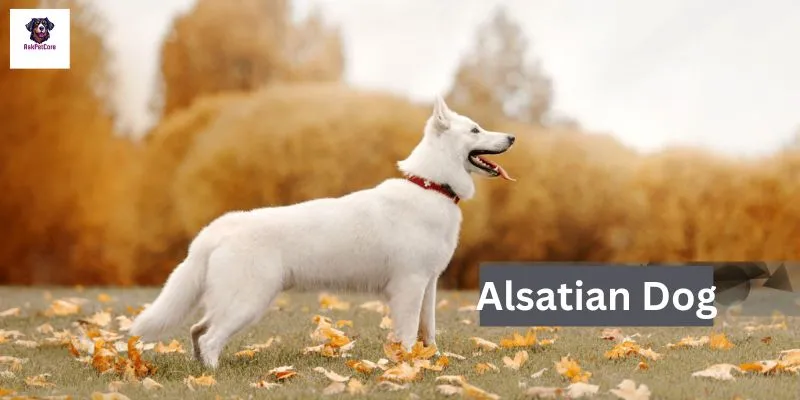
Brief history of the Alsatian dog breed:
The history of the Alsatian dog breed is as fascinating as it is rich. Originating in Germany, these remarkable canines were initially bred for their exceptional herding abilities. Their journey began in the late 19th century when a visionary named Max von Stephanitz set out to create the ultimate herding dog. Through meticulous breeding and selection, he crafted a breed that would soon become renowned for its intelligence, loyalty, and versatility.
The early Alsatians were highly prized for their prowess as working dogs, excelling not only in herding but also in various other roles such as guarding, search and rescue, and military service. Their remarkable capabilities quickly caught the attention of dog enthusiasts worldwide, leading to their widespread popularity.
Explanation of the term “Alsatian” and its origin:
The term “Alsatian” may raise some eyebrows and pique curiosity among dog lovers. Derived from the Alsace region of France, it was initially used as an alternative name for the German shepherd breed. The adoption of this name was influenced by geopolitical tensions in the aftermath of World War I and World War II. At the time, there was reluctance to use the term “German Shepherd” due to negative connotations associated with Germany.
Despite its origin, the name “Alsatian” became widely accepted, especially in English-speaking countries. However, in recent years, there has been a resurgence of the use of the breed’s original name, “German Shepherd,” reflecting a growing appreciation for the breed’s German heritage.
A. Physical characteristics and appearance:
Alsatians, also known as German Shepherds, are renowned for their distinctive and imposing appearance. They typically have a sturdy and well-proportioned build, with a muscular frame that exudes strength and athleticism. Standing at around 22 to 26 inches tall at the shoulder and weighing between 50 to 90 pounds, Alsatians command attention with their noble stance and confident demeanor.
One of the most striking features of the Alsatian is its iconic coat, which is dense, double-layered, and weather-resistant. The outer coat is typically medium to long in length, straight or slightly wavy, and comes in a variety of colors, including black and tan, sable, and solid black. Their expressive almond-shaped eyes, erect ears, and alert expression contribute to their overall regal appearance.

B. Temperament and personality traits:
Alsatians are renowned for their exceptional intelligence, loyalty, and versatility, making them well-suited for a wide range of roles and environments. They are known for their unwavering devotion to their families, forming strong bonds with their owners and displaying a fierce protective instinct when it comes to their loved ones.
Despite their imposing size and protective nature, Alsatians are typically gentle and affectionate companions, especially towards children and other pets when properly socialized from a young age. They thrive on human interaction and enjoy being actively involved in family activities, whether it’s playing in the backyard, going for walks, or simply lounging by their owner’s side.
Alsatians are also known for their keen intelligence and eager-to-please attitude, which makes them highly trainable and adaptable to various tasks and environments. They excel in obedience training, agility competitions, search and rescue operations, and serving as therapy or service dogs.
C. Common health concerns and care needs:
Like all dog breeds, Alsatians are susceptible to certain health issues that owners should be aware of. Common health concerns include hip and elbow dysplasia, which are orthopedic conditions that can affect the joints and mobility of the dog. Regular exercise, a balanced diet, and maintaining a healthy weight can help mitigate the risk of these conditions.
Alsatians may also be prone to certain genetic disorders, such as degenerative myelopathy, a progressive neurological disease that affects the spinal cord, and hemangiosarcoma, a type of cancer that commonly affects the breed. Regular veterinary check-ups, proper nutrition, and preventive care are essential for maintaining their overall health and well-being.
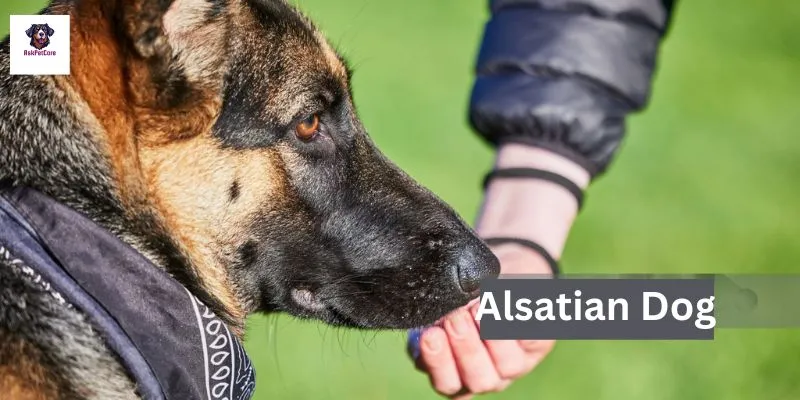
Additionally, Alsatians require regular grooming to keep their coats healthy and free of mats and tangles. Brushing their coat several times a week helps to remove loose fur and prevent shedding, while occasional baths can help keep them clean and odor-free. It’s also important to trim their nails regularly, clean their ears, and brush their teeth to maintain good oral hygiene.
Providing adequate exercise, mental stimulation, and socialization is crucial for meeting the needs of Alsatians and ensuring they lead happy, fulfilling lives. With proper care and attention, Alsatians can thrive as beloved companions and valuable members of the family.
Historical background of the breed’s development:
The journey of the Alsatian, or German Shepherd, breed is a captivating tale rooted in the late 19th century in Germany. The visionary behind this remarkable breed was Captain Max von Stephanitz, a German cavalry officer with a passion for canine breeding and training. Disillusioned by the lack of a unified and versatile herding dog in Germany, von Stephanitz embarked on a mission to create the ultimate working dog.
In 1899, von Stephanitz founded the German Shepherd Dog Club of Germany and began meticulously selecting and breeding dogs with exceptional herding instincts, intelligence, and physical prowess. Through careful breeding programs and rigorous standards, he succeeded in creating a breed that surpassed all expectations, embodying the ideal combination of strength, agility, and intelligence.
Originally bred for herding sheep, German Shepherds quickly proved their worth in a multitude of roles, including police work, military service, search and rescue, and as loyal family companions. Their versatility and adaptability made them invaluable assets in various fields, earning them widespread recognition and admiration.

Role of the Alsace region in the breed’s early recognition:
The Alsace region of France played a significant role in the early recognition and development of the German shepherd breed. It was in Alsace that the breed’s distinctive qualities were first recognized and appreciated, leading to its initial recognition as the “Alsatian Wolf Dog.”
The fertile lands of Alsace provided an ideal environment for herding and agriculture, where the skills of the German shepherd were put to the test and showcased. Farmers and shepherds in Alsace quickly recognized the breed’s exceptional abilities as herding dogs, guard dogs, and loyal companions, cementing their place in the region’s agricultural landscape.
The recognition of the breed in Alsace helped to elevate its status and popularity, laying the foundation for its eventual global acclaim. Although the name “Alsatian” has since fallen out of favor in many circles, its association with the breed’s early recognition in Alsace remains a testament to the breed’s enduring legacy.
Evolution of the name “Alsatian” to “German Shepherd”:
The evolution of the name “Alsatian” to “German Shepherd” reflects the complex history and geopolitical dynamics of the early 20th century. Following the devastation of World War I and World War II, there was reluctance to use the term “German” due to negative connotations associated with Germany.
As a result, the name “Alsatian” emerged as an alternative designation for the breed, derived from the Alsace region where it was first recognized. The use of this name gained traction, particularly in English-speaking countries, as a way to avoid using the term “German.”
However, in recent years, there has been a resurgence of the use of the breed’s original name, “German Shepherd,” reflecting a growing appreciation for the breed’s German heritage and identity. Today, “German Shepherd” is the more commonly used and recognized name for the breed internationally, reaffirming its German roots and legacy.
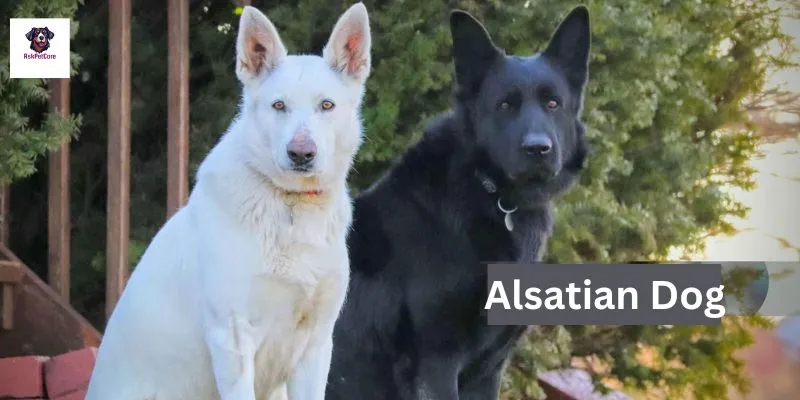
Is an Alsatian the right dog for you? Assessing compatibility:
Before bringing an Alsatian into your home, it’s essential to assess whether this breed is the right fit for your lifestyle, living situation, and needs. Alsatians are intelligent, loyal, and versatile dogs, but they require committed and responsible ownership. Consider the following factors:
Activity level: Alsatians are high-energy dogs that require plenty of exercise and mental stimulation. If you lead an active lifestyle and enjoy outdoor activities, an Alsatian may be well-suited to your routine.
Space: Alsatians thrive in homes with ample space to roam and play. They may not be suitable for apartment living unless provided with regular exercise and mental enrichment.
Time commitment: Alsatians require consistent training, socialization, and attention from their owners. If you have a busy schedule or travel frequently, consider whether you can dedicate the time and effort needed to care for an Alsatian.
Family dynamics: Alsatians are known for their loyalty and affection towards their families, but they may be wary of strangers and protective of their territory. Ensure that all family members are comfortable and confident in handling a large and potentially protective dog.
Training and socialization tips for Alsatian puppies:
Early training and socialization are crucial for shaping the behavior and temperament of Alsatian puppies. Start training as soon as you bring your puppy home, focusing on basic obedience commands such as sit, stay, come, and leash walking. Use positive reinforcement techniques, such as treats, praise, and rewards, to encourage good behavior and build a strong bond with your puppy.
Socialization is equally important to expose your puppy to different people, animals, environments, and stimuli in a positive and controlled manner. Introduce them to new experiences gradually and ensure that they have positive interactions to prevent fear or aggression issues later in life. Puppy classes and obedience training programs can be valuable resources for socialization and training.
Meeting the exercise and mental stimulation needs of the breed:
Alsatians are active and intelligent dogs that require regular exercise and mental stimulation to thrive. Aim for at least 60 minutes of physical activity per day, including brisk walks, runs, hikes, or play sessions in a fenced yard or dog park. Engage them in activities that tap into their natural instincts, such as fetch, agility, or scent work.
In addition to physical exercise, provide your Alsatian with mental stimulation to keep their minds sharp and prevent boredom. Interactive toys, puzzle feeders, obedience training, and scent games are excellent ways to challenge their intellect and prevent destructive behaviors. Rotate toys and activities regularly to keep them engaged and stimulated.
Remember that every Alsatian is unique, and their exercise and mental stimulation needs may vary based on factors such as age, health, and temperament. Pay attention to your dog’s cues and adjust their routine accordingly to ensure that they remain happy, healthy, and fulfilled companions.
Debunking myths about the breed’s temperament and behavior:
Myth: Alsatians are inherently aggressive.
Reality: Contrary to popular belief, Alsatians are not inherently aggressive dogs. Like all breeds, their temperament is influenced by genetics, upbringing, and training. When properly socialized and trained from a young age, Alsatians are typically friendly, loyal, and well-behaved companions. Aggression is often a result of poor breeding, lack of socialization, or inadequate training.
Myth: Alsatians are not suitable for families with children.
Reality: Alsatians can be excellent family pets when raised in a loving and structured environment. They are known for their loyalty and affection towards their families, including children. However, it’s essential to supervise interactions between Alsatians and young children and teach both parties how to interact safely and respectfully. With proper socialization and training, Alsatians can form strong bonds with children and be gentle and tolerant companions.
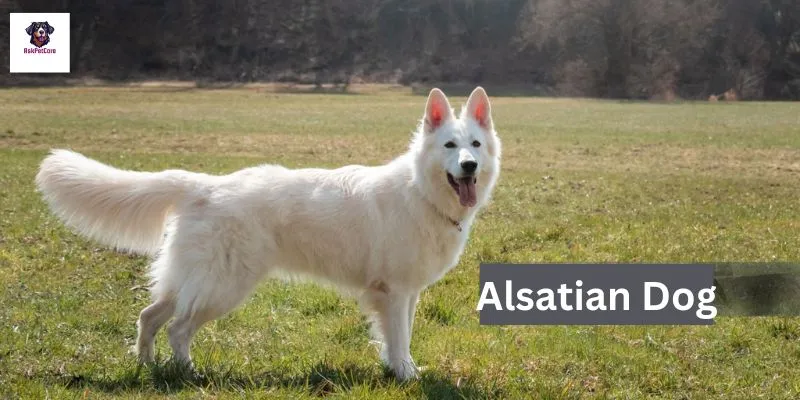
Addressing concerns about aggression and compatibility with children:
Concern: Alsatians are aggressive towards strangers.
Reality: While Alsatians can be naturally wary of strangers due to their protective instincts, they are not inherently aggressive. Proper socialization and training are key to ensuring that Alsatians are well-adjusted and confident around unfamiliar people and situations. Early exposure to different environments, people, and animals can help prevent fear-based aggression and promote positive interactions.
Concern: Alsatians may not be suitable for homes with children.
Reality: Alsatians can be wonderful companions for families with children when raised and trained appropriately. They are known for their patience, loyalty, and protective nature, making them excellent guardians for children. However, it’s crucial to teach children how to interact respectfully with dogs and supervise their interactions to prevent accidents or misunderstandings. With proper supervision and training, Alsatians can thrive in family environments and form strong bonds with children.
Clarifying misconceptions about health issues and lifespan:
Misconception: Alsatians have a short lifespan.
Reality: With proper care and attention, Alsatians can live long and healthy lives, typically ranging from 9 to 13 years or more. Like all breeds, they may be prone to certain health issues, such as hip dysplasia, elbow dysplasia, and degenerative myelopathy. However, responsible breeding practices, regular veterinary care, a balanced diet, and regular exercise can help mitigate the risk of these health issues and promote longevity.
Misconception: Alsatians are prone to aggressive behavior due to health issues.
Reality: Aggression in Alsatians is not typically caused by health issues but rather by factors such as genetics, upbringing, and environment. While certain health conditions may cause discomfort or pain, leading to changes in behavior, they are not the sole determinant of aggression. Early detection and treatment of health issues, along with proper training and socialization, can help prevent behavioral problems and promote a happy and well-adjusted Alsatian.
A. Heartwarming tales of Alsatians serving as loyal companions:
Alsatians have a long history of forming deep bonds with their owners and serving as loyal companions in times of need. One heartwarming tale involves Max, an Alsatian who saved his owner’s life during a hiking trip in the mountains. When his owner slipped and fell down a steep slope, Max bravely stayed by his side, keeping him warm and alerting rescuers to their location. Thanks to Max’s unwavering loyalty and quick thinking, his owner was rescued and brought to safety, showcasing the extraordinary bond between humans and Alsatians.
B. Success stories of Alsatians in various working roles:
Alsatians have a proven track record of success in various working roles, from police and military service to search and rescue operations. One inspiring success story involves Rex, an Alsatian who served as a search and rescue dog during natural disasters. With his keen sense of smell and tireless determination, Rex helped locate numerous survivors trapped under rubble, bringing hope and relief to devastated communities. His bravery and dedication earned him accolades and recognition as a hero in the search and rescue community.
Testimonials from Alsatian dogs owners sharing their experiences and insights:
Countless Alsatian owners have shared their experiences and insights into life with these remarkable dogs. One owner, Sarah, recounts how her Alsatian, Bella, transformed her life after a difficult period of loss and grief. Bella’s unwavering loyalty, affection, and playful spirit brought joy and purpose back into Sarah’s life, reminding her of the power of love and companionship.
Another owner, Mark, shares how his Alsatian, Rocky, excelled in obedience training and agility competitions, proving that Alsatians are not only loyal companions but also highly intelligent and trainable working dogs. Rocky’s success in competitions inspired Mark to pursue a career in dog training, helping other Alsatian owners unlock their dogs’ full potential.
These testimonials highlight the profound impact that Alsatians have on their owners’ lives, from providing companionship and comfort to demonstrating bravery and skill in demanding working roles. Through their stories, Alsatian owners celebrate the unique qualities and enduring legacy of this exceptional breed.
Conclusion:
Recap of key points covered in the blog:
Throughout this blog, we’ve explored the captivating world of Alsatian dogs, also known as German Shepherds, uncovering their fascinating history, unique characteristics, and enduring legacy. We began by delving into the breed’s origins and development, tracing its evolution from humble beginnings in Germany to global recognition as one of the most versatile and beloved dog breeds.
We debunked common myths and misconceptions surrounding Alsatians, clarifying misunderstandings about their temperament, behavior, and health. From addressing concerns about aggression to highlighting their compatibility with children and families, we’ve provided valuable insights into the true nature of this remarkable breed.
Practical considerations for prospective owners were also explored, including tips for assessing compatibility, training and socialization, and meeting the exercise and mental stimulation needs of Alsatians. By understanding the responsibilities and commitments involved in caring for an Alsatian, prospective owners can make informed decisions about welcoming these loyal companions into their homes.
Encouragement for readers to explore further and consider adopting an Alsatian:

As we conclude this journey into the world of Alsatian dogs, I encourage readers to explore further and consider adopting an Alsatian into their lives. These intelligent, loyal, and versatile dogs have touched the hearts of countless individuals and families around the world, enriching their lives in countless ways.
Whether you’re drawn to the breed’s storied history, impressive working abilities, or unwavering loyalty, there’s much to admire and appreciate about Alsatians. By opening your heart and home to an Alsatian, you’ll be embarking on a rewarding and fulfilling journey filled with love, companionship, and unforgettable memories.
Closing thoughts on the enduring appeal and remarkable qualities of the breed:
In closing, let us reflect on the enduring appeal and remarkable qualities of the Alsatian breed. From their noble appearance to their unwavering loyalty and intelligence, Alsatians embody the very best qualities of man’s best friend. Whether serving as loyal companions, dedicated working partners, or beloved family pets, Alsatians continue to captivate hearts and inspire admiration around the world.
As we celebrate the legacy of the Alsatian breed, let us remember the countless tales of courage, companionship, and devotion that have been shared by owners and admirers alike. May the spirit of the Alsatian live on for generations to come, bringing joy, comfort, and inspiration to all who are fortunate enough to share their lives with these extraordinary dogs.
Are Alsatian dogs and German Shepherds the same breed?
Yes, Alsatian dogs are another name for German Shepherds. They’re the same breed with different names.
How much exercise do Alsatian dogs need daily?
Alsatian dogs typically need about 1 to 2 hours of exercise per day to stay healthy and happy.
What are common health issues in Alsatian dogs?
Common health issues in Alsatian dogs include hip dysplasia, elbow dysplasia, and degenerative myelopathy.
Are Alsatian dogs good with children?
Yes, Alsatian dogs are usually good with children when properly trained and socialized from a young age.
What is the lifespan of Alsatian dogs?
On average, Alsatian dogs live between 9 to 13 years, but this can vary depending on factors like genetics and overall health care.
Why the Alsatian dog is called a German Shepherd by some people?
The term “Alsatian” was used to refer to German Shepherd dogs in some countries, including the UK, during and after World War I due to anti-German sentiment. However, the breed’s name officially reverted to German Shepherd in most places by the late 20th century.
Is there any difference between a German Shepherd and an Alsatian?
-
- No, there is no inherent difference between a German Shepherd and an Alsatian. They are the same breed of dog, known as the German Shepherd, but were occasionally referred to as Alsatians in some regions.
- Are German Shepherds and Alsatian dogs the same? If not, then what’s the difference between the two?
- German Shepherds and Alsatians are the same breed of dog. The term “Alsatian” was used historically in some countries as an alternative name for the German Shepherd breed.
- Which one would win in a fight between a pit bull and a German Shepherd?
- It’s impossible to predict the outcome of a dogfight as it depends on various factors such as size, strength, temperament, and training of the individual dogs. Dogfighting is illegal and unethical, and it’s essential to focus on responsible pet ownership and positive training methods instead.
- Is it easier to raise one German Shepherd puppy or two?
- Raising one German Shepherd puppy can be challenging but manageable with proper training, socialization, and attention. Adding a second puppy increases the workload significantly, requiring more time, effort, and resources to ensure both puppies receive adequate care and training.
- Which is a better guard dog: German Shepherd or Rottweiler?
- Both German Shepherds and Rottweilers are excellent guard dogs known for their loyalty, intelligence, and protective instincts. The choice between them depends on factors such as personal preference, lifestyle, and specific needs. German Shepherds are more versatile and commonly used in various roles, including law enforcement and search and rescue, while Rottweilers are known for their strength and intimidation factor.
Here are some reference books that are considered authoritative on the topic of dog care, including nail care:
- “The Complete Dog Owner’s Manual” by Dr. Bruce Fogle
- “The Ultimate Guide to Dog Care: Everything You Need to Know to Keep Your Dog Happy and Healthy” by Amy Marder and Andrew Luescher
3. “The Veterinarians’ Guide to Natural Remedies for Dogs: Safe and Effective Alternative Treatments and Healing Techniques from the Nations Top by Martin Zucker
